

6 Engineering Site Visit Checklist Tips to Know
An engineering site visit checklist is critical for most projects. It’s the reality check that keeps designs grounded in the real world.
Site visits are the ultimate way to get up close and personal with a project and the client. You’ll usually find yourself making site visits during these project stages:
- Project kickoff to grasp the work scope
- Design phase to fine-tune project details
- Construction phase to tackle problems
- Start-up post-construction to ensure everything’s running smoothly
To make the most of each site visit, follow my 6 engineering site visit checklist tips. I’ll focus on design phase visits, but these takeaways apply to all stages. Also, enjoy some rad photos from a hydroelectric facility I helped retrofit.
#1 Map out a solid plan of action for your site visit
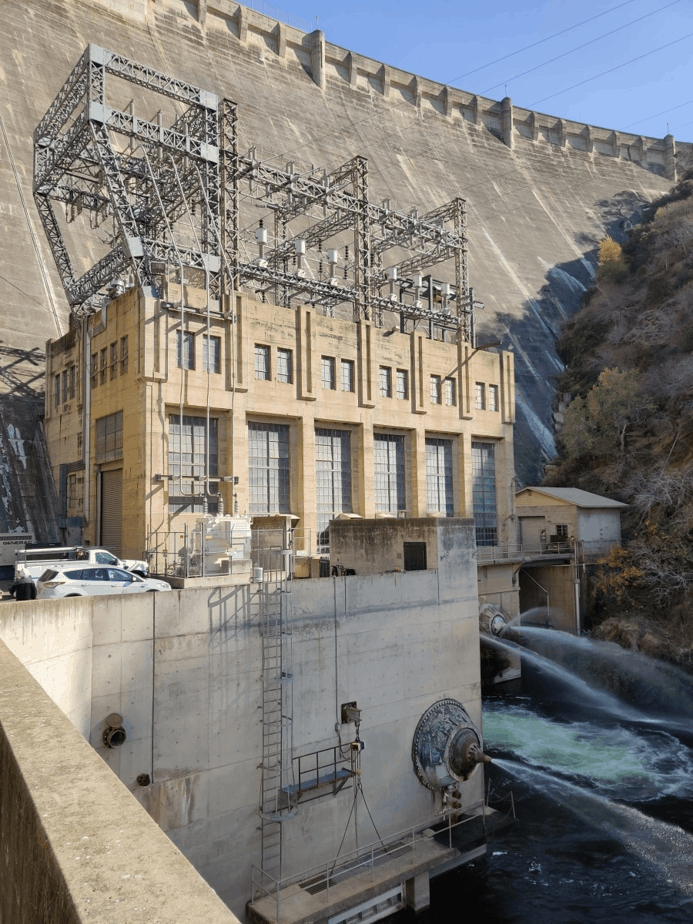
Preparation is the name of the game. Before I set foot on a site, I know exactly what I need to do there.
Take this example: say my project is to upgrade an existing substation for increased capacity. I’d first make a list of questions for the client and items to investigate at the site.
Client questions might include:
- Do you have existing as-built drawings and specs?
- How much new load are you forecasting?
- Can you break down the existing loads?
- Are there any issues I should know about?
- Is any existing equipment causing trouble?
- How much space is there to expand the substation?
- What’s your lead time for this project?
- How much downtime can you handle during the cutover phase?
- Are other upgrades needed (e.g., security, protective relaying)?
My site investigation checklist would include:
- Confirm equipment ratings
- Measure clearances
- Snap photos inside panels (e.g., control panels)
- Inspect existing equipment (e.g., switchgear, transformers)
- Measure space for new equipment
- Check transmission and distribution line connections
- Look for facility quirks or safety concerns
Keep in mind, I might tackle some tasks over the phone or through email before the visit. This way, the client can gear up for our powwow and avoid wasting precious time.
For instance, there have been times when I forgot to mention that I needed to inspect panel X. At the site, the client told me they couldn’t access it.
Come prepared to keep site visits efficient
When you visit a site, your client will most likely show you around. You won’t have all the time in the world to explore and brainstorm on the fly. Besides, you don’t want to come across as a clueless, unprepared engineer.
So, treat a site visit like any other high-stakes meeting. Some site visits can take months to arrange, so it’s best to know exactly what you want to achieve before you even set foot on the site. You don’t want to return from the visit kicking yourself, thinking,
“DAMN! I forgot to take photos of the control panel’s interior!”

Important Note: Don’t forget to ask your client about any site safety concerns. This is crucial for your safety and everyone around you.
I’ve been to sites with live 230,000-volt equipment and experienced treacherous drives to sites where I’ve nearly met my maker .
#2 Investigate the site thoroughly
Time to channel your inner Sherlock Holmes! Your blueprint for this detective work is the action plan you create in tip #1.
You’ll want to check if the client’s scope of work has any limitations, or if there are other issues your client forgot to mention. Sometimes, the work scope seems straightforward on paper, but once you’re on site, you uncover a whole slew of unexpected problems.
I like to compare it to our ambition to travel and colonize Mars. From Earth, the mission appears simple: send a couple of big rockets to Mars and create an artificial habitat that provides oxygen and protection from extreme cold, high radiation, and low atmospheric pressure.
However, the reality is mind-blowing. The challenges are enormous, and there’s a never-ending list of problems we haven’t even considered yet. Just take a look at some of the issues I’ve listed here when it comes to tunneling on Mars alone.
The point is, don’t just rely on what your client tells you. You’re the expert, so it’s up to you to investigate the site and determine what’s best for your client. After that, you can discuss your findings with them and fine-tune the work scope.
#3 Snap loads of pictures at the site

Nowadays, everyone has a high-end camera in their pocket with their smartphone. You can take endless top-quality photos on a whim. But, you need to know how to take great photos at a project site too.
Otherwise, when you return to your office, your photos might only cause more confusion. To avoid this, I’ll share four tips on how to take and manage pictures (and videos) effectively.
A) Organize and separate your photos on site
Picture yourself at a project site, snapping away photos, feeling like you’ve got everything under control. You think you’ll remember why and where each shot was taken. But let’s be real, once you’re back in your office, it’s a hot mess trying to figure out which photos belong where.
Imagine taking 50 pictures at location A and another 50 at locations B and C. To keep things organized, I whip out my trusty notepad, jot down the location or equipment, and snap a photo of it. Here are some examples of what I write:
- Inside building X looking at the west wall
- Inside the left-most cabinet of switchgear ‘Faulk’
- Investigating high voltage cabling of switchgear ‘Faulk’
With my digital divider in place, I only then start snapping field photos. Once I’m done, I move on to the next spot and repeat the process. Trust me, this technique is a lifesaver when you’re dealing with hundreds of photos.
B) Take photos in a patterned consistent manner
So, you want to capture the components in a 90-inch tall control panel? First, step back and get an overall shot of the panel. Then, zoom in and snap photos of the components from top to bottom.
This way, you can easily understand the mounting arrangement of the components in the zoomed-in photos. I’ve had moments where I didn’t take zoomed-out photos, and back in the office, it was a nightmare trying to follow the wiring of the components. Super frustrating!
C) Upload and organize your photos ASAP
Get those photos uploaded and organized right after your site visit, while everything’s still fresh in your head. If you missed any of the earlier photo tips, you’ll remember the details and make a note.
Next, turn each of your written notes from photo tip ‘A’ into separate folders. For example, if you took pictures at three different spots on your project site, your digital file organization would look something like this:
Main folder: Site Visit at Zeus Substation (DD/MM/YY)
Subfolders:
- Location #1
- Location #2
- Location #3
Lastly, give each of your photos a detailed name. Invest a little time now, and you’ll save yourself from future headaches.
D) Take a lot of photos
Back in the day, film was expensive, so you had to be stingy with your shots. But now, there’s no reason not to go photo-crazy! Plus, you can review the quality of each photo right there on the spot.
So go ahead, take loads of photos and even videos. They’ll only help you back at the office. I say, if a photo has even a 1% chance of being useful, take the shot! You never know when those seemingly pointless pics might save the day.
#4 Bring all your necessary supplies to the site
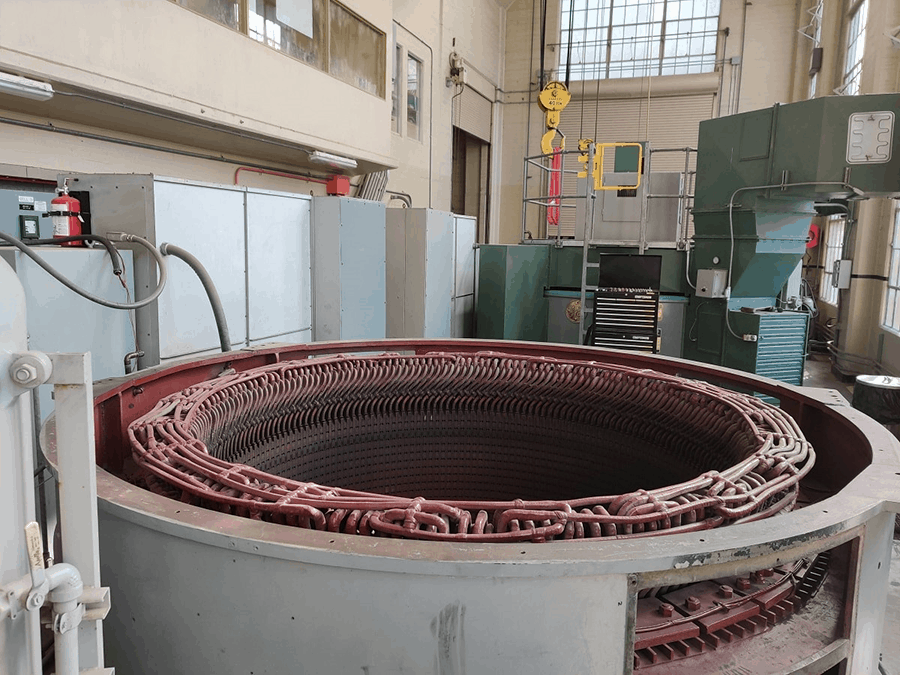
Depending on your field of engineering, you’ll have a bunch of supplies to bring along. My list is always pretty lengthy . Don’t expect your client to hook you up with supplies, especially since they’re paying you!
So pack for the unexpected and bring all your gear just in case. You never know when you’ll need to measure a piece of equipment or pry open a panel. If you’re not prepared, you’ll miss out on valuable data.
#5 Forge a strong connection with your client during site visits
Nothing beats getting to know your client face-to-face, right? Sure, digital communication is a breeze these days, with everyone clutching their trusty smartphones.
But, let’s be real – in-person interactions still reign supreme. That’s why I think site visits are the perfect chance to bond with your client.
Without a face to match the name, you’re just another entry on their spreadsheet. Genuine human connections, on the other hand, pave the way for deeper relationships. This usually leads to smoother project execution. Plus, your future requests are less likely to be left hanging.
#6 Show up on time for your site visit
This one’s a no-brainer, but punctuality is key. Actually, aim to be 10 to 15 minutes early. You don’t want to make a lousy impression by keeping your client waiting.
Go the extra mile to pinpoint the precise site location in advance. This might mean asking your client for map snapshots and off-the-beaten-path directions. After all, some engineering project sites can be in the boonies, with no physical address that your GPS can easily locate.
I’d recommend downloading the site map on your phone, just in case you lose signal. Alternatively, use a non-internet-dependent GPS device.
And if you’re running late, give your client a heads-up with a phone call. At the end of the day, professionalism is paramount.
Engineering site visit checklist wrap up
Site visits play a huge role in engineering projects. The better you tackle site visits, the more successful projects you’ll spearhead.
My advice? Learn about site visits specific to your engineering field . Pick the brains of seasoned engineers to discover what to look for during site visits. Then, tweak your engineering site visit checklist as needed. You might uncover something unique to your line of work that I didn’t cover.
What do you find the most important about engineering project site visits? What’s on your engineering site visit checklist?
SUBSCRIBE TO ENGINEER CALCS NEWSLETTER
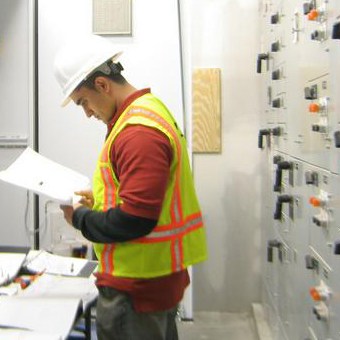
Author Bio: Koosha started Engineer Calcs in 2019 to help people better understand the engineering and construction industry, and to discuss various science and engineering-related topics to make people think. He has been working in the engineering and tech industry in California for well over 15 years now and is a licensed professional electrical engineer, and also has various entrepreneurial pursuits.
Koosha has an extensive background in the design and specification of electrical systems with areas of expertise including power generation, transmission, distribution, instrumentation and controls, and water distribution and pumping as well as alternative energy (wind, solar, geothermal, and storage).
Koosha is most interested in engineering innovations, the cosmos, sports, fitness, and our history and future.
Leave a Comment Cancel reply
Save my name, email, and website in this browser for the next time I comment.
25+ SAMPLE Construction Site Visit Report in MS Word
Construction site visit report in ms word, 25+ sample construction site visit report, definition:, a deep dive into on-ground realities:, understanding the purpose and significance of the report:, key components to include in the report:, effective practices for drafting a comprehensive report:, the impact of a well-constructed site visit report:, why is a site visit report crucial for construction management, how frequently should site visits and corresponding reports be conducted, can site visit reports help identify construction quality issues, what tools and technology can be used to generate site visit reports, how are equipment and material inventories documented in a site visit report, when reports assist in budget monitoring and financial planning.
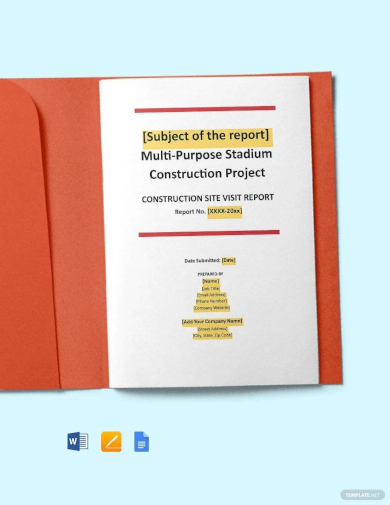
Construction Site Visit Report Template
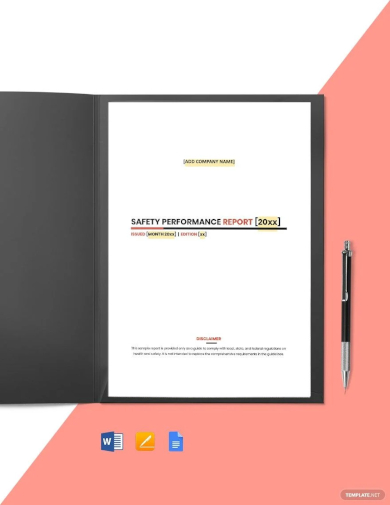
Construction Site Safety Report Template
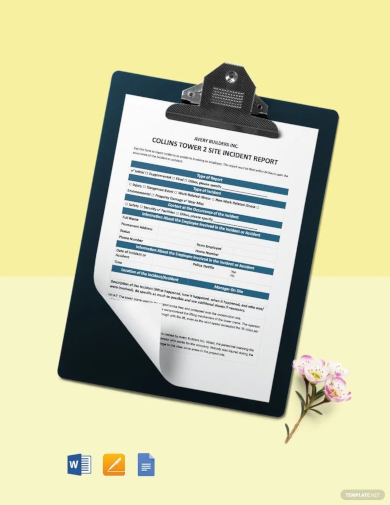
Construction Site Incident Report Template
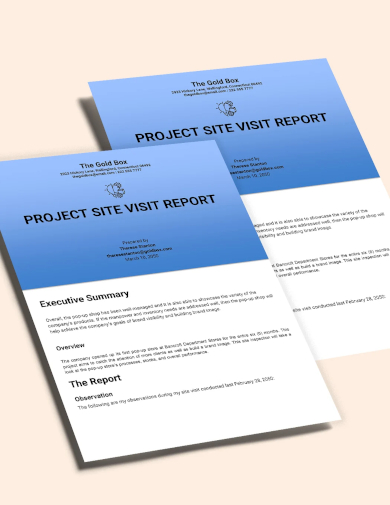
Project Site Visit Report Template
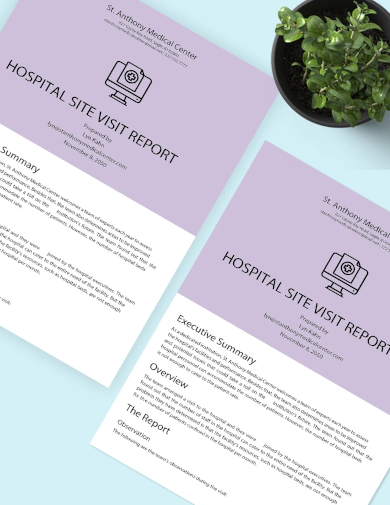
Hospital Site Visit Report Template
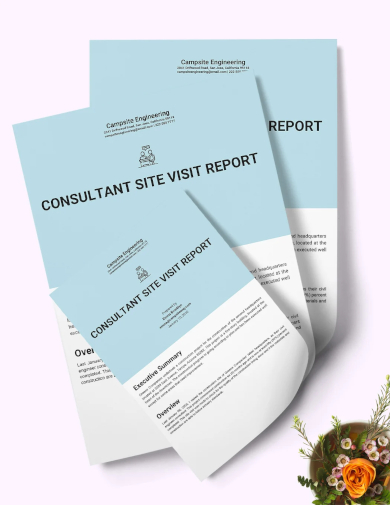
Consultation Site Visit Report Template
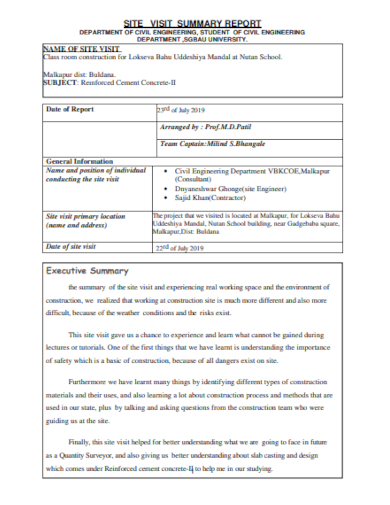
Construction Site Visit Summary Report
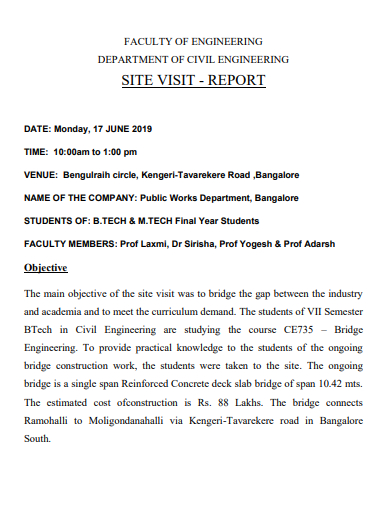
Construction Engineering Site Visit Report
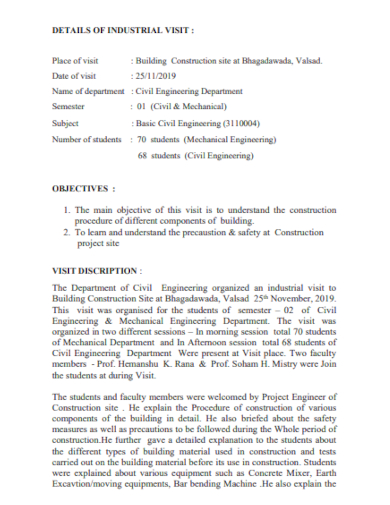
Construction Industrial Site Visit Report

Sample Construction Site Visit Report
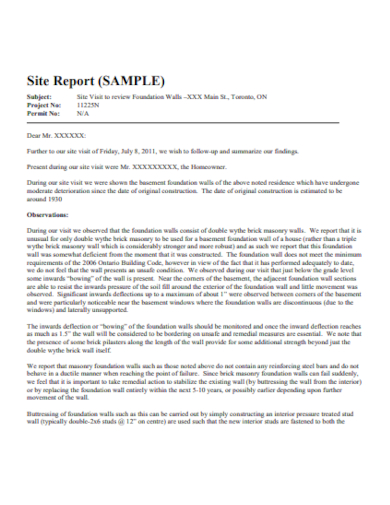
Construction Site Visit Report in PDF
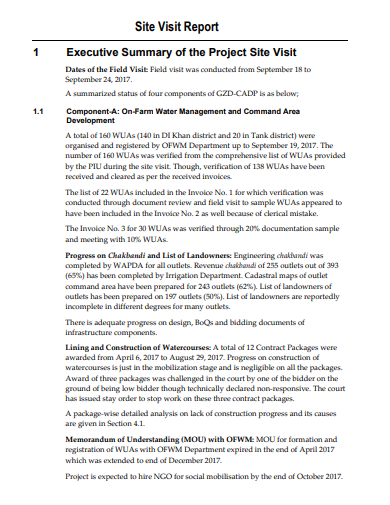
Construction Site Visit Executive Summary Report
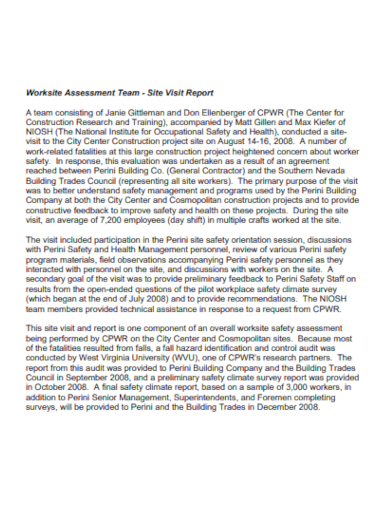
Construction Site Work Assessment Visit Report
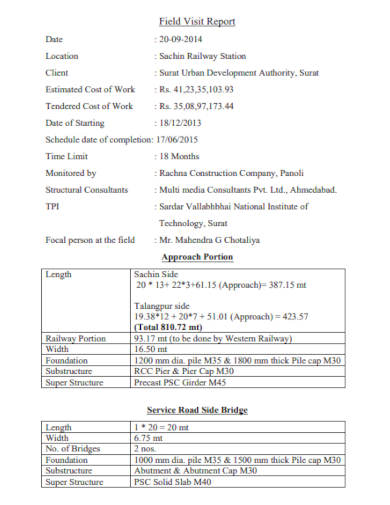
Construction Site Field Visit Report
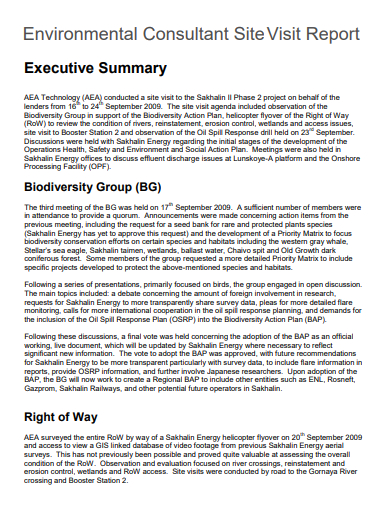
Construction Environmental Site Visit Report
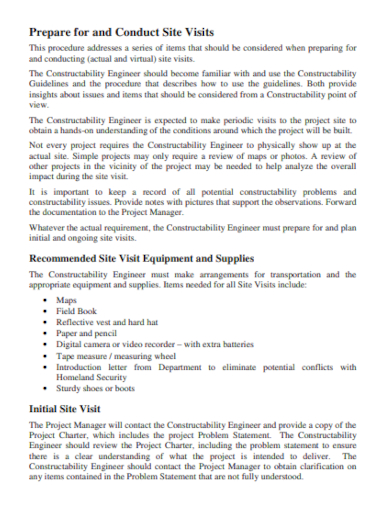
Construction Site Visit Report Format

Construction Site Visit Progress Report
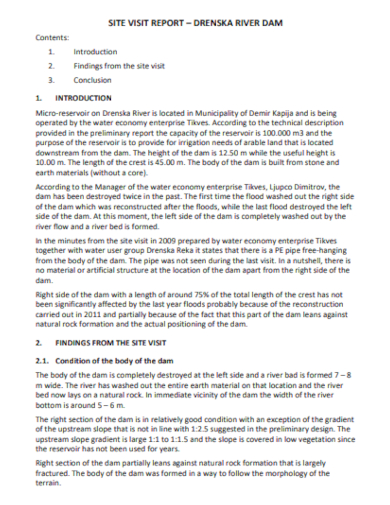
Bridge Construction Site Visit Report
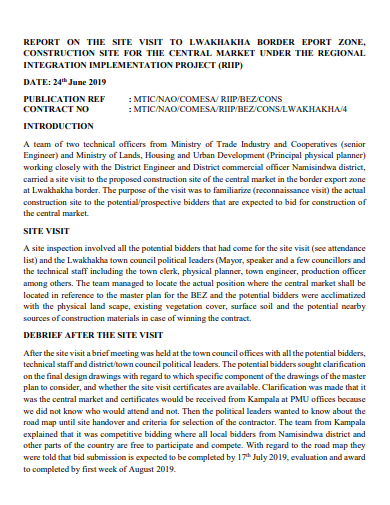
Road Construction Site Visit Report

Construction Project Site Visit Report
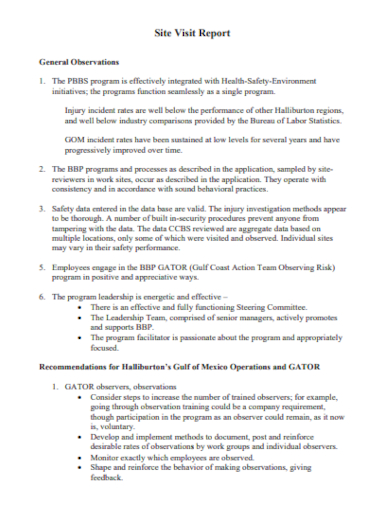
Construction Site Recommendation Visit Report

Civil Engineering Site Visit Report
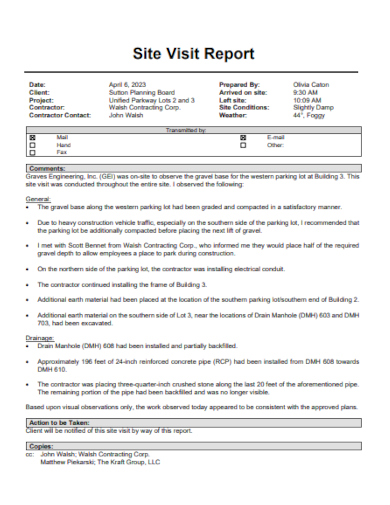
Building Construction Site Visit Report
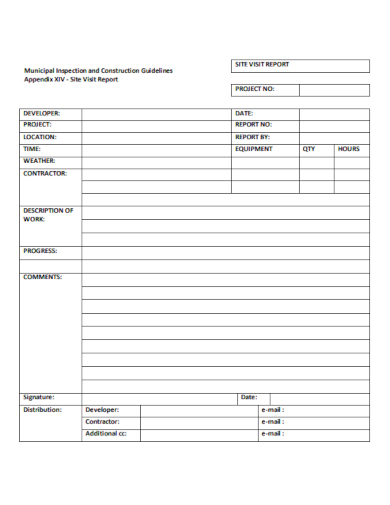
Construction Site Inspection Visit Report
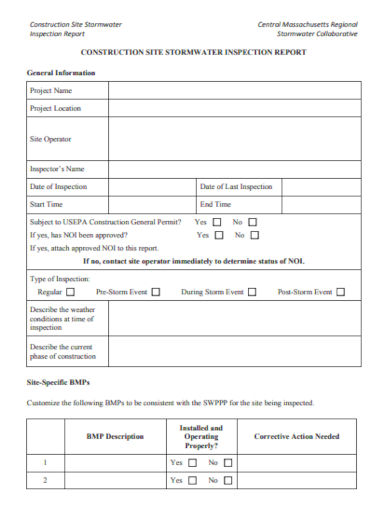
Construction Site Operator Visit Report

Report of Construction Site Visit
Purpose of the report:.
- Documentation: The report creates a recorded snapshot of the project’s status at a specific time, capturing details that can be referred back to if questions arise in the future.
- Communication: It serves as a structured communication tool, ensuring all relevant parties—be it site supervisors, project managers, stakeholders, or clients—are informed about the site’s present conditions and any observed issues.
- Quality Control: By highlighting discrepancies, deviations, or quality lapses, the report aids in maintaining the desired quality standards of the project.
- Safety Assurance: The report emphasizes safety protocols and identifies potential safety hazards, ensuring that workers’ safety remains a top priority and regulatory standards are met.
- Issue Identification and Resolution: Anomalies, bottlenecks, or concerns noted in the report can be promptly addressed, reducing potential downtime or project delays.
- Feedback and Recommendations: The report provides a platform for inspectors or visitors to offer feedback or suggestions, potentially improving project processes or outcomes.
Significance of the Report:
- Accountability: It fosters a sense of responsibility among the construction team, knowing that regular site visits will capture the real-time status and any deviations.
- Historical Record: Over time, these reports collectively serve as a history of the project’s evolution, documenting its journey from inception to completion.
- Stakeholder Confidence: Regular and transparent reporting assures stakeholders of the project’s direction and health, nurturing trust and confidence in the executing team.
- Risk Mitigation: By identifying and documenting risks early, the report aids in timely risk management, preventing potential financial or reputational damages.
- Benchmarking: The insights drawn from these reports can be used for performance benchmarking, measuring project progress against set standards or past projects.
Report Header:
- Project Name: The title or identifier of the construction project.
- Date of Visit: When the site inspection took place.
- Report Number: A unique identifier or sequence number for the report, especially if reports are frequent.
Visitor Details:
- Name: Who conducted the site visit.
- Title/Position: The visitor’s role or designation.
- Company/Affiliation: Which organization the visitor represents.
Site Details:
- Location: Address or description of the construction site.
- Project Manager/Supervisor: The person in charge on the site.
- Project Phase: Current stage of the construction project (e.g., foundation, framing, finishing).
Work Progress:
- Completed Tasks: Activities that have been finalized since the last report or visit.
- Ongoing Tasks: Current activities on-site.
- Planned Tasks: Upcoming work scheduled for the next period.
Safety Observations:
- Compliance: Noting adherence to safety protocols and standards.
- Incidents/Accidents: Any accidents or near-misses that have occurred.
- Safety Concerns: Potential hazards or unsafe practices observed.
Equipment and Material:
- Usage: A list of equipment and machinery in use.
- Condition: Noting any malfunctioning or damaged equipment.
- Material Stock: Observation of material inventory, highlighting shortages or surpluses.
Labor/Staff:
- Attendance: Number of workers present during the visit.
- Performance: General observations on work quality and efficiency.
- Training/Competence: Notes on any observed skill gaps or training needs.
Pre-Visit Preparation:
Standardized format:, active observations:, detailed and clear descriptions:, visual documentation:, avoid jargon:, be objective and neutral:, highlight critical issues:, confidentiality and access control:, review and proofread:, feedback and continuous improvement:, guided decision-making:, enhanced accountability:, safety assurance:, efficient resource management:, stakeholder confidence:, dispute prevention and resolution:, continuous improvement:, historical record and benchmarking:, share this post on your network, you may also like these articles, medical report.
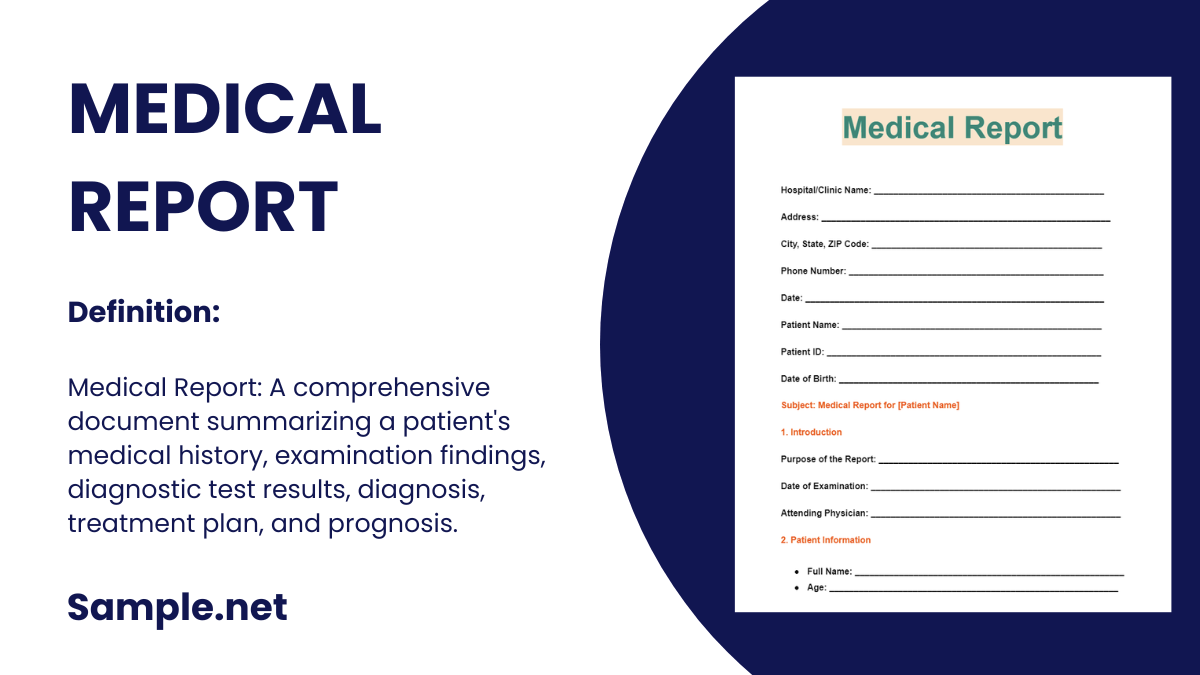
In this comprehensive guide, we will explore the essentials of creating an effective Medical Report. Whether you are a healthcare professional or need to understand how to document medical…
Training Report
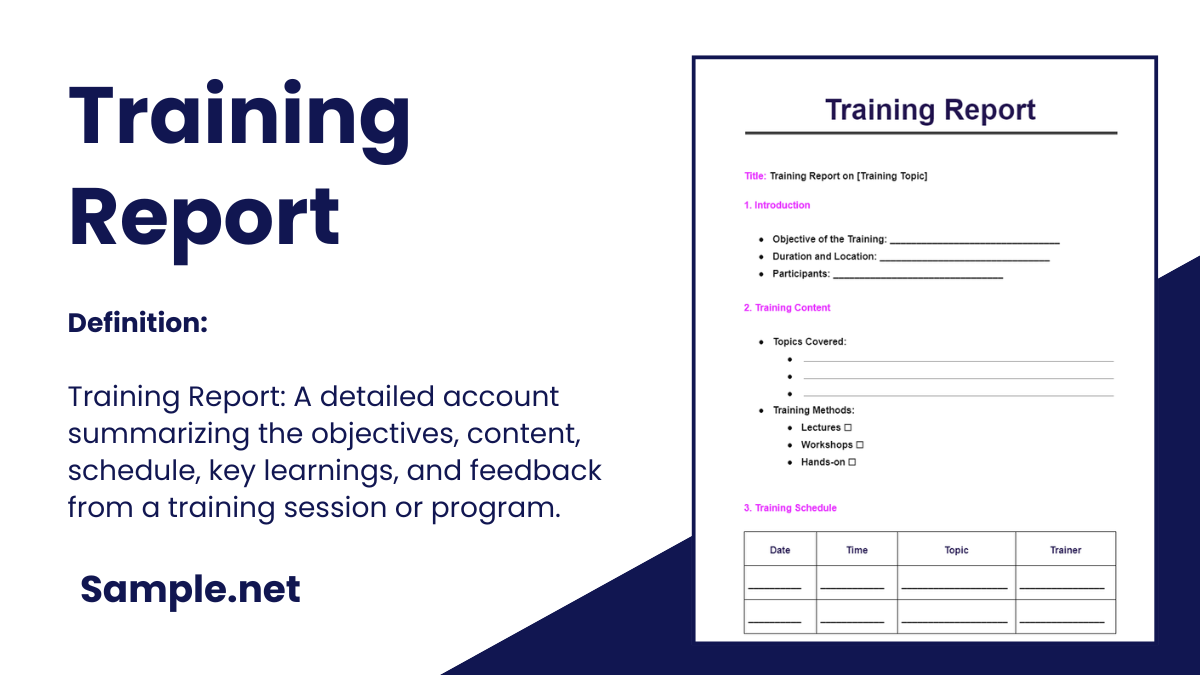
In this comprehensive guide, we will delve into the intricacies of creating an effective Training Report. Whether you are new to this process or looking to enhance your existing…
browse by categories
- Questionnaire
- Description
- Reconciliation
- Certificate
- Spreadsheet
Information
- privacy policy
- Terms & Conditions
All Formats
Report Templates
18+ site visit report templates.
There may come a time when you are tasked with visiting a particular industrial site to assess and gather as much information as you can regarding its operation, architecture, procedure, observation, management, safety, engineering, property, and current state. Should that happen, then what you will want to make after the technical assessment would be a site visit report . A field visitation or visit report is suitable for a contractor service, civil engineering, HR management, IT development, hospital visit, internship program sample, and much more. This article will teach you all that you need to know to make one using Apple Pages Format, MS Excel Formats , and other platforms.
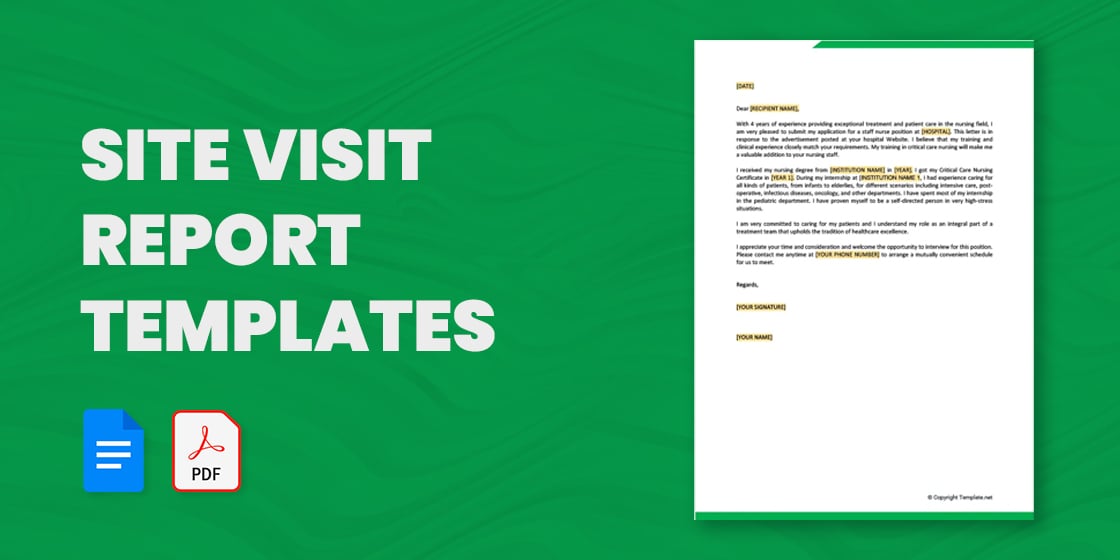
6 Steps for Creating a Site Visit Report
Step 1: start with the general information, step 2: define the site and its purpose, step 3: explain the sequence of events, step 4: summarize the site operations, step 5: identify the site’s strengths and weaknesses, step 6: make your conclusion and provide suggestions, 9+ site visit report templates, 1. free site visit report template.

- Google Docs
Report Template Bundle


2. Site Visit Report Format Template
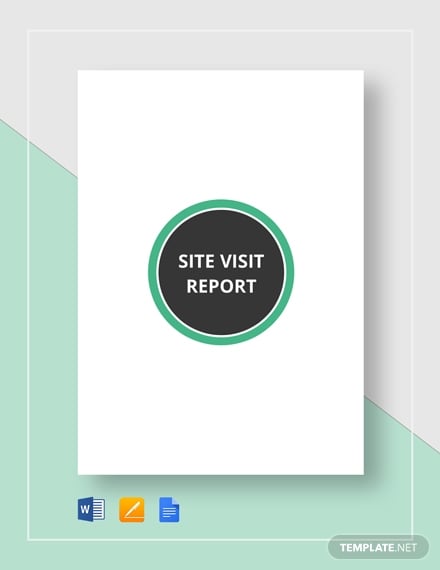
3. Site Visit Report Format For Construction Site

4. Site Visit Report Template Word

5. Project Site Visit Report Format
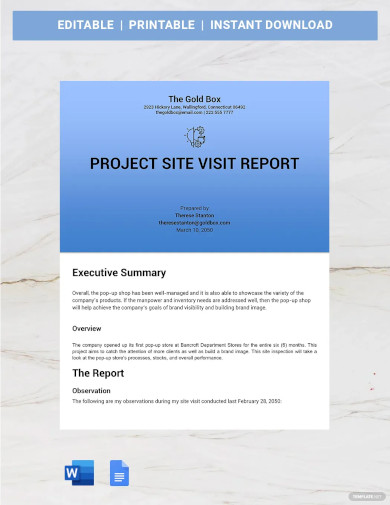
6. IT Site Visit Report Template

7. Site Visit Summary Report Template
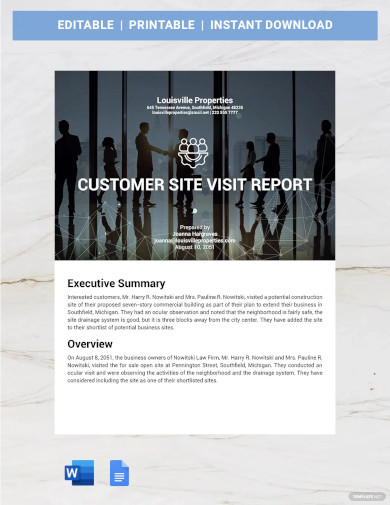
8. Site Visit Report Example
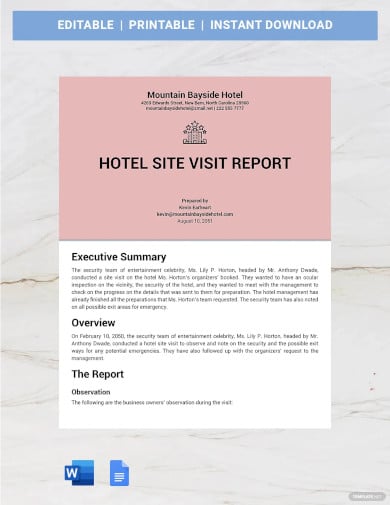
9. Site Visit Report Sample
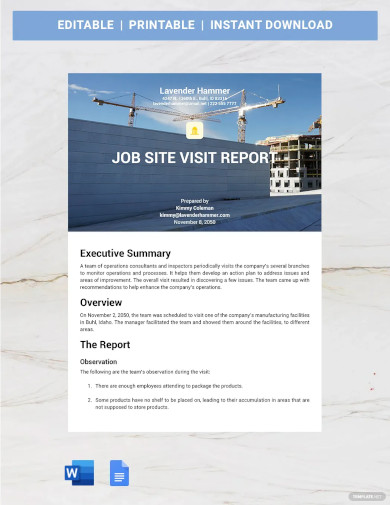
10. How To Write A Site Visit Report

11. Technical Site Visit Report Template
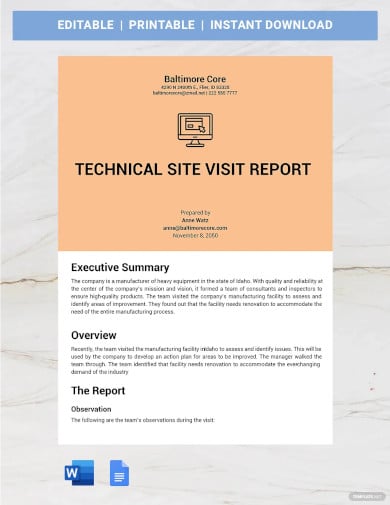
12. Visit Report Format
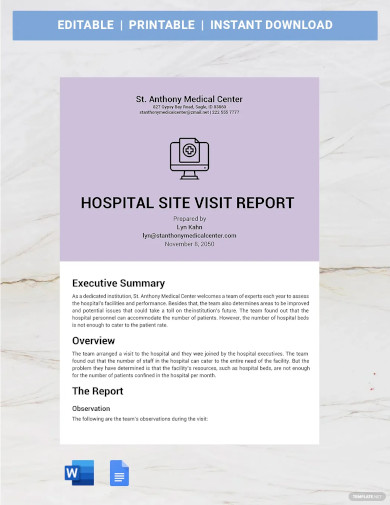
13. Security Site Visit Report Template
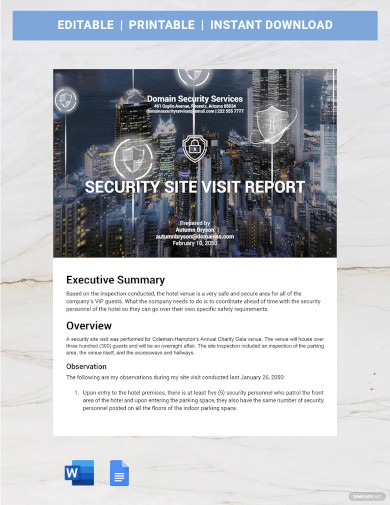
14. Site Visit Report Sample PDF
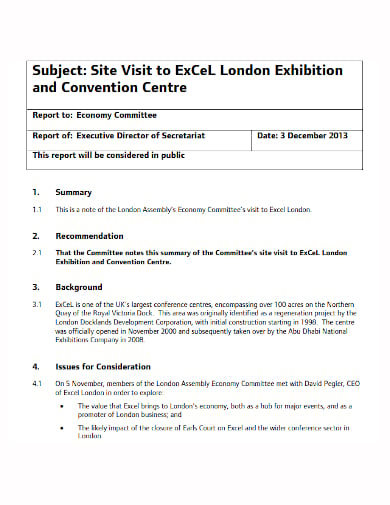
15. Contractor Observation Site Work Visit Report Template
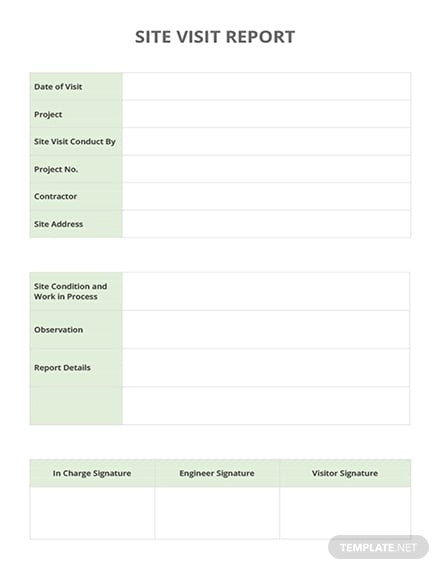
- Editable PDF
16. Site Visit Report Format For Engineers
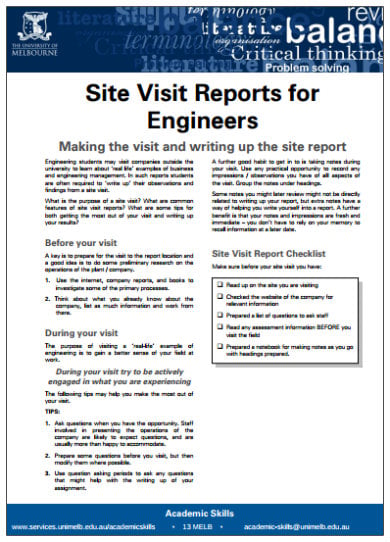
17. Free Field Visit Report Format In Word
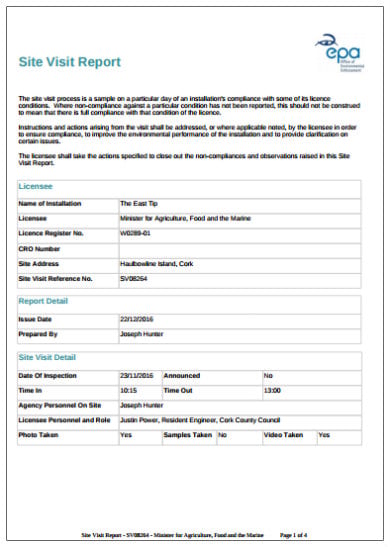
18. Free Industrial Property Supplier Site Visit Report
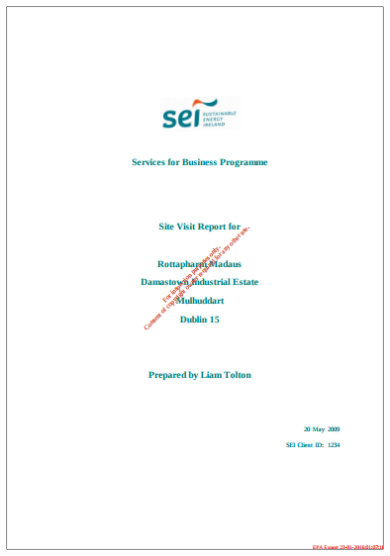
19. Free Project Client Site Visit Report in PDF Format
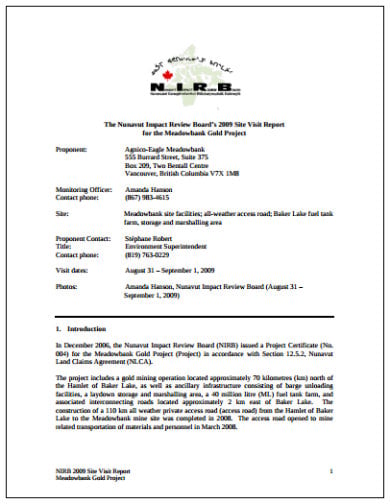
More in Report Templates
Construction site visit report template, customer site visit report template, hotel site visit report template, sales site visit report template, job site visit report template, technical site visit report template, hospital site visit report template, it site visit report template, security site visit report template, consultant site visit report template.
- How to Create a Financial Audit Report [10+ Templates to Download]
- 40+ Monthly Management Report Templates in PDF | Google Docs | Excel | Apple Pages
- 25+ Non Conformance Report Templates – PDF, Docs, Word, Pages
- 19+ Event Report Templates – Word, PDF, Docs, Pages
- 34+ Report Card Templates- Word, Docs, PDF, Pages
- 23+ Sample Inspection Report Templates- Docs, Word, Pages
- 36+ Weekly Activity Report Templates – PDF, Docs
- 10+ Free Audit Findings Report Templates in PDF | MS Word
- 10+ Audit Exception Report Templates in PDF | MS Word
- 11+ Audit Committee Report Templates in PDF | MS Word
- 6+ Logistics Audit Report Templates in PDF | MS Word
- 11+ Logistic Report Templates in PDF
- 8+ Logistics Monthly Report Templates in PDF | MS Word
- 17+ Internship Student Report Templates
- 64+ Monthly Report Samples
File Formats
Word templates, google docs templates, excel templates, powerpoint templates, google sheets templates, google slides templates, pdf templates, publisher templates, psd templates, indesign templates, illustrator templates, pages templates, keynote templates, numbers templates, outlook templates.

Free Site Analysis Checklist
Every design project begins with site analysis … start it with confidence for free!
Site Visit Analysis and Report: How to conduct and evaluate your first architecture site visit
- Updated: January 2, 2024
Here we will cover everything you need to know about of how to approach your first site visit analysis for a new project, what to do when physically there, and how to eventuate and summarize the information you collect.
However before visiting for the first time we highly recommend that you carry out desktop study beforehand, as this will provide an important initial understanding of the site and generate far better results and more refined questions once there.
The desktop study will also help to identify the important items of equipment that you will need to take with you to make your trip as successful as possible. …these are mentioned below but may include a:
- Site map (very important)
- Tape measure
- Laser distance meter
…more essential architects items here

Conducting an architecture site visit analysis
A site visit analysis is a comprehensive report that summarizes the findings of a physical inspection of a potential development site. It includes information on the site’s physical characteristics, location, surrounding area, demographic information, environmental impact, zoning regulations, traffic flow, and recommendations for development.
The report synthesizes all gathered information to provide a comprehensive understanding of the site and its potential.
What to look for?
Once there, there are a whole number of important areas and items that need to be studied and recorded, some of which would have already been identified during your desktop study, but as a starting point we’ve produced the below list of all the key areas:
We suggest that you take these with you and tick them off as they are found, so not to miss anything.
- Entrance and access points (both pedestrian and vehicle)
- Security (gates, surveillance)
- Travelling to the site (road types and suitability, safety, public transport)
- Boundary treatment (fencing, vegetation, land form, water)
- Extent of boundary (does it match the survey/OS map)
- Circulation (existing travel routes within the site)
- Noise levels (quiet and loud areas)
- Services (electric, gas, water, sewage)
- Existing buildings (condition? Relevant? Protected?)
- Existing landscape features (condition? Relevant? Protected?)
- Neighbouring buildings (local vernacular, protected?)
- Views in and out of the site (areas to screen off and areas to draw attention to)
- Tree’s and vegetation (protected and rare species)
- Ecology (any areas likely to be home to protected species)
- Orientation (sun and wind paths)
- Light levels (areas in direct sunlight, shaded areas, dappled light)
- Accessibility (disability access)
- Surrounding context (historical, heritage, conservation area, SSSI, AONB)
- Existing materials in and around the site
- Topography (site levels)
- Flood level (is it likely to flood)
- Soil and ground conditions (types and suitability)
- Existing legal agreements (where are the rights of way, covenants)
- Hazards (Electricity lines, Drainage, Telephone lines, Sub-stations)
We provide a site analysis checklist here covering all of the above that’s free to download.

Where to start
You want to begin documenting your visit as soon as you arrive, as the approach and entrance to your site are just as important as the site itself. If you’re desktop study didn’t highlight the possible routes and methods of transport to and from the site, then this needs to be recorded also.
Documenting your first impressions is vitally important, ask yourself; what do you see as you enter the site? what do you hear? what do you feel? (…what senses are the first to be triggered), you will only get one chance to do this properly and so you need to make it count!
…and don’t forget to include the location of the elements you record, when noting it down on your site map or survey. By the end of your visit, you should barley be able to read whats under all your notes …write down everything!
Moving on from first impressions, you should plan to walk around the site as least twice (as a minimum) to ensure that nothing is missed, so leave enough time to make a least two loops, noting down and photographing everything that you feel is relevant, no matter how small.
…there’s nothing worse than getting back to the studio and realizing you forgot to document something.
We like to use the check list supplied above and:
- Firstly walk around the site whilst annotating a site plan
- Secondly with a camera …photographing everything
- and thirdly with both …just in case something has been missed
This way we can focus on one task at a time, helping to ensure we gather everything we need.
In terms of a camera, and depending on your budget we suggest looking one these three options (but a phone is just as good):
- Sony DSCW800 Digital Compact Camera
- Sony DSCWX350 Digital Compact Camera
- Canon EOS 1300D DSLR Camera
It can be difficult to identify certain elements, and some may only be noticeable from a professional survey, such as underground services and precise spot levels. But approximations of such locations and heights are a good start and can serve as a reminder for further investigation.
If accessible you can of course take your own measurements and so this is where a tape measure and/or distance meter will come in handy.
Try one of these:
– Tape measure
– Laser distance meter
What to take with you
Firstly look at the weather, you wont have a good time if your not dressed appropriately, and this applies to protecting your notes and equipment as well as yourself.
…a simple quick check, can make or break a visit, arranging to go on sunny day will also give you the best site photographs, which could also be used in future CGI’s and presentation material.
If the site is derelict, or has potentially dangerous or hazardous elements, it is likely that you will require personal protection equipment (otherwise known as PPE) so make sure this is organised before setting off.
As a minimum you want to take with you a camera, a pen and an OS map. Google Maps can provide a temporary (though very basic) version, but a much preferred scaled version that can normally be obtained through your university or practice via such companies as:
- Digimap – digimap.edina.ac.uk
- Xero CAD – xerocad.co.uk
- CAD Mapper – cadm a pper.com (free account available)
As mentioned, you will want to make notes, and record everything you observe, experience and hear all over this map. So print out a couple of copies at a usable and convenient size.

A camera is essential in documenting the site, and the pictures taken during your visit are likely to be used on a daily basis throughout your project. So once again make sure you document and record everything.
Pictures should be taken from all distances, close zoomed-in sections of materials and textures along with shots of the site from a distance to include the area as a whole and within its context.
Note pads are important for obvious reasons, we prefer an A5 sized pad, as this is much easier to carry and hold than an A4 one.
Tape measures can be useful, but we never go on a site visit without a distance meter.
…and lastly if you’re visiting on your own, don’t forget to tell someone where you’ll be and take your phone with a charged battery.
Our site visit equipment check list looks something like this:
- Weather check
- Print out our “what to look for” checklist
- Site map (at least 2 copies)
- PPE equipment
- Scale ruler
If you are interested in trying our architecture site analysis symbols for your own site analysis recordings and presentation, then head over to our shop ( Here ).
FAQ’s about site visit analysis
What is included in a site analysis.
As discussed above, site analysis typically includes the following elements:
- Site location and context: Understanding the location of the site in relation to the surrounding area, including climate, topography, neighboring buildings, and accessibility.
- Physical characteristics: Examining the site’s physical features, such as its size, shape, soil type, vegetation, and water sources.
- Utilities and infrastructure: Assessing the availability of utilities such as electricity, water, gas, and sewer, as well as the infrastructure, such as roads and transportation.
- Environmental considerations: Analyzing the site’s potential environmental impact and assessing any potential hazards, such as flooding or soil stability.
- Zoning and land-use regulations: Reviewing the local zoning and land-use regulations to determine the types of uses and development allowed on the site.
- Cultural and historical context: Examining the cultural and historical significance of the site and its surrounding area.
- Demographic information: Analyzing the demographic information of the surrounding area, including population, income, and age.
- Traffic and pedestrian flow: Studying the flow of vehicular and pedestrian traffic in the area to understand the impact on the site.
This information is used to inform the design of a building or development project, taking into account the unique characteristics and constraints of the site.
What are the steps of site analysis?
including the above, the steps involved in conducting a site analysis report typically include:
- Data Collection: Gather data and information about the site, including maps, aerial photos, zoning regulations, environmental reports, and other relevant documents.
- Site Observations: Conduct a site visit to observe and document the site’s physical and environmental conditions, such as topography, vegetation, water sources, and neighboring buildings.
- Context Analysis: Analyze the site’s location and context, including its surrounding area, access to transportation, and cultural and historical significance.
- Demographic Analysis: Study the demographic information of the surrounding area, including population, income, and age, to understand the potential market for the development project.
- Traffic and Pedestrian Flow Analysis: Study the flow of vehicular and pedestrian traffic in the area to understand the impact on the site.
- Synthesis: Synthesize the information gathered in the previous steps to develop a comprehensive understanding of the site and its potential.
- Recommendations: Based on the analysis, make recommendations for the development of the site, taking into account the unique characteristics and constraints of the site.
These steps help architects and planners to gain a deeper understanding of the site and to make informed decisions about the design and development of a building or project.
Every design project begins with site analysis … start it with confidence for free!.

- Construction Details
Detail Template Kit
- $ 29.99
- Add to cart

Timber Construction Detail Kit

Steel Frame Detail Kit
Leave a reply cancel reply.
You must be logged in to post a comment.
As seen on:

Unlock access to all our new and current products for life .
Providing a general introduction and overview into the subject, and life as a student and professional.
Study aid for both students and young architects, offering tutorials, tips, guides and resources.
Information and resources addressing the professional architectural environment and industry.
- Concept Design Skills
- Portfolio Creation
- Meet The Team
Where can we send the Checklist?
By entering your email address, you agree to receive emails from archisoup. We’ll respect your privacy, and you can unsubscribe anytime.

- Framework Agreements
- Accreditations
- Fabrication Design & Detailing
- Welded Engineering Assemblies
- Primary Structural Steelwork
- Secondary Metalwork
- Renewable Power Plants
- Installation
- CE Marking Accreditation
- Large Water Control Structures
- Archimedes Screw Pumps
- Pumping stations
- Trash Screens and Cleaners
- Flow Control Installations
- Waste Water Treatment Plants
- Archimedes Screw Generator Repair
- Project Management
- Mechanical Engineering
- Electrical Engineering
- Control & Automation
- Planned, Preventative and Emergency Maintenance
- Composite Bridges
- Composite Lock Gates
- Composite Stoplogs
- Recycled Plastic Structures
- Case Studies
- Newsletters
Site Survey / Inspection & Testing
Site surveys.
ECS carry out site surveys when an initial project scope is proposed, our design teams will gather information to produce a detailed CAD drawing or a comprehensive estimate to complete the feasibility of the project. It can determine a precise location, access, best orientation for the site and the location of obstacles that may hinder the project.
Wiring Traces, Cable Schedules, P & ID, & Fault Reports
Wire tracing services can help to make your repair or improvement work faster, safer, and more efficient. Knowing the location of wiring can help you to prevent issues including electrical interference and overloading of circuits. ECS has the tools and expertise to conduct wiring traces quickly and safely.
Cable schedules provide a convenient for those involved in maintenance, installation, etc. to accurately determine things such as cable type, voltage, size and location, core number, and route length. They apply to a number of cable functions including communications, power and control, and instrumentation. ECS creates cable schedules designed for ease of use by electrical installation contractors.
A piping and instrumentation diagram is a useful demonstration of the design of a physical system as well as the equipment it is composed of. A P&ID also illustrates how various systems interconnect, making inspections such as those related to safety hazards and operability faster and more efficient. ECS designs all of its P&ID diagrams in accordance with ISA standards.
High Voltage Surveys
ECS has undertaken the High Voltage Maintenance contract for the Environment Agency for many years. We look after the main incoming 11 KV panel along with the 3.3 KV supply panel to the large water pumps that are rated at over 1,000 KW. These pumps provide critical flood defence to the area and prevent major incidents happening in the county.
Our in house design and CAD drawing department will visit your site to carry out a full survey so that a feasibility can be done for your Project. We can supply all relevant drawings for the project to include design layouts and General Arrangements (GA) Construction drawings and As built drawings that can be included in your O&M Manuals.
NICEIC & ECA Certified Electricians
ECS’s experienced team of electrical engineers are NICEIC and ECA certified. This means you can rest assured that when you call us, you will be visited by a technician who is highly qualified to provide the best possible service. Whether you are a landlord requiring certification for letting purposes, or a business owner in need of fire alarm certification, ECS provides a one-stop shop for all of your electrical certification needs.
Inspection & Testing Reports
Our engineers are available when you need them to provide periodic inspection and testing reports. Using software-based tools, we conduct inspections according to your testing needs and automatically generate an Electrical Installation Condition Report.
New Installation Certificates
If you have recently undergone a new electrical installation, or have introduced additional circuits to an existing installation, ECS can provide the Electrical Installation Certificate (in accordance with Standard BS 7671) you need to prove the safety of the design, construction, and testing of your electrical system.
Portable Appliance Testing (PAT)
ECS’s portable appliance testing services keep your business in strict compliance with the Health & Safety at Work Act. Regular maintenance, inspection and testing ensure that you and your employees are safe from accidents caused by faulty or poorly-maintained appliances. We offer professional and affordable onsite testing services, after which we provide a PAT electrical safety certificate and appliance register for your health and safety records.
In-Depth Inspections & Condition Reports
Regular inspections and electrical condition reports can help to detect dangerous faults before they lead to damage, injury, or loss of life. ECS will conduct an in-depth inspection of your electrical installation to determine existing or potential hazards, and provide the certification you need to satisfy legal and insurance requirements
Low Carbon Solutions Surveys
Our energy analysis strategies can help you determine a plan of action to make your business the most energy-efficient it can be. After measuring your level of energy consumption, we offer solutions to help you both improve efficiency and minimize your carbon footprint.
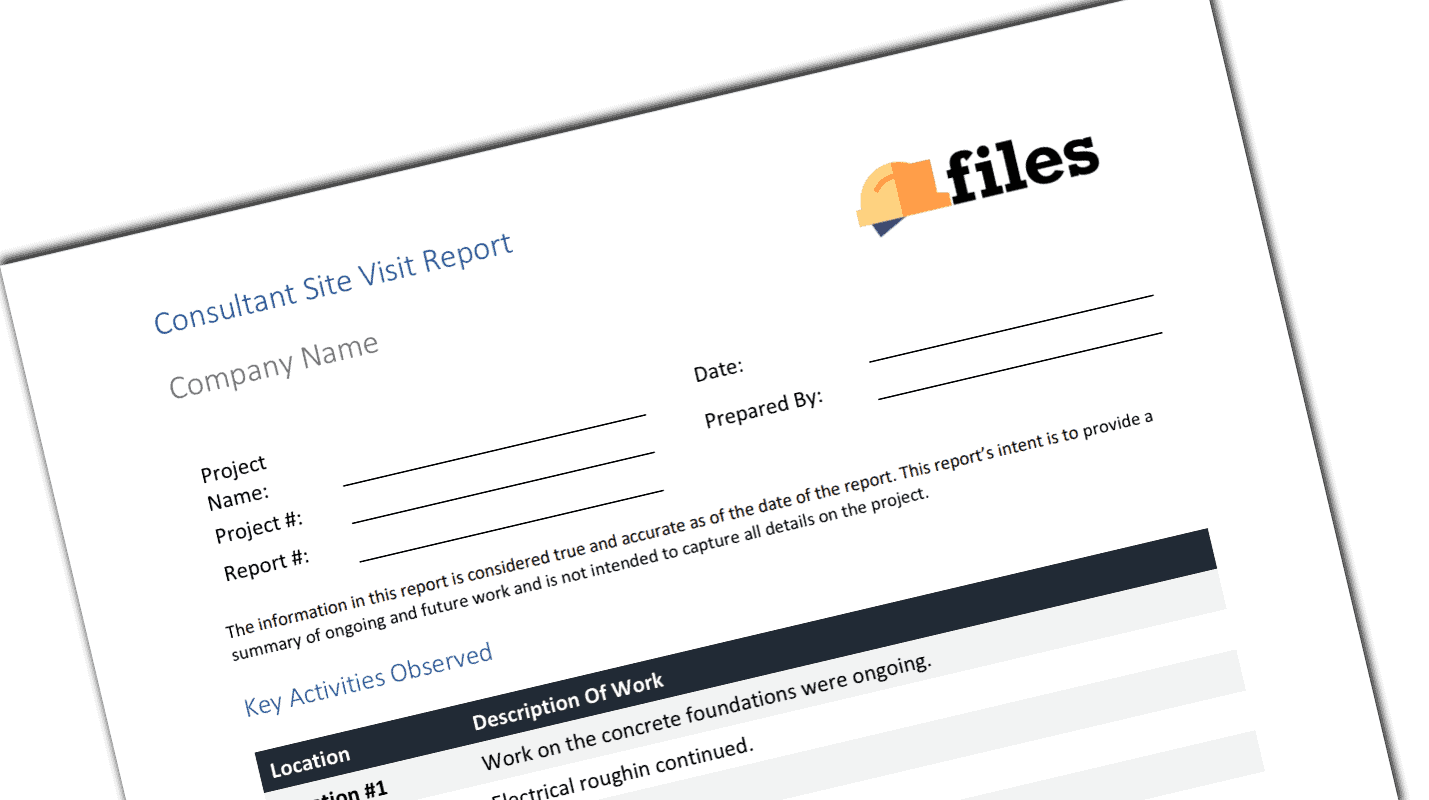
Consultant Site Visit Report
- Organize your site visits
- Clearly communicate deficiencies to the construction team
- Build trust with the contractors
LOVE THIS ITEM?
Download For Free
Subscribe now and download this item for free! You'll also unlock unlimited access to thousands of other construction documents, templates and tutorials.
You will receive your documents and files immediately after you complete the checkout process. You will receive a link on the checkout page as well as via email.
As long as the document remains on Essential Construction you will be able to download it once purchased.
Yes, in most cases (with the exception of stock photography and ebooks) the files you will receive are editable.
We accept debit, all credit cards (Visa, Amex Mastercard etc) as well as payments via Apple Pay, Google Pay and Paypal.
Our documents are for use on your projects. You may not resell these documents on other marketplaces.
Full Description
When a consultant visits site it can be an intimidating time for contractors. There’s a chance that the consultant will point out something wrong with the build. To avoid this and avoid confusion it’s important for consultants to generate a site visit report. What is a site visit report and what is it’s purpose on a construction site?
A site visit report is a document generated by a consultant, architect or engineer after their visit to site which documents observations and issues. It’s purpose is to record the facts so that people can refer to them in the future and act on deficiencies.
This consultant site report template includes the following fields:
- Project name
- Project number and location
- Date of inspection
- Observations
- Issues or deficiencies noted
This template is a document mean it will work with all modern day word processors including Microsoft Word, WordPerfect, google docs, etc
Ensure your site visits are documented properly with this construction consultant site visit report.
There are no reviews yet
Your review *
Name *
Email *
Save my name, email, and website in this browser for the next time I comment.
Related products
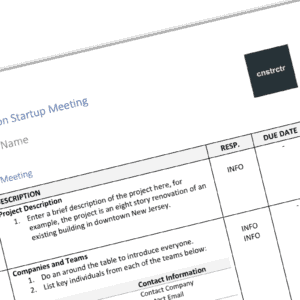
Construction Startup Meeting Template
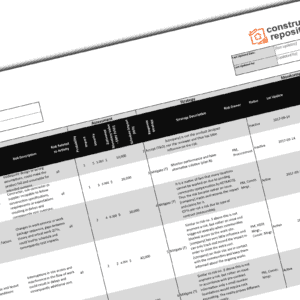
Construction Risk Register Template
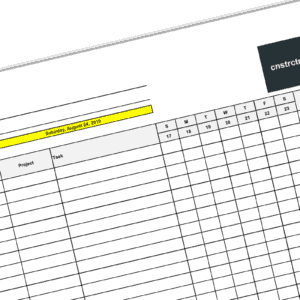
Hourly Labour Timecard Template
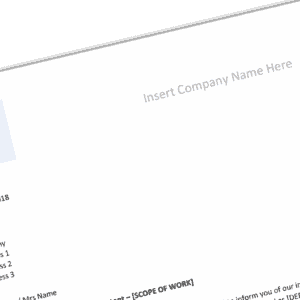
Letter of Intent Template

Commercial – Construction site observation report

Construction site observation report: What's required (and a sample)
What is a site observation report used for in construction.
A site observation report is the report which documents the general and detailed observations a worker or inspector makes on site - on a particular day and at a particular time.
The idea behind conducting observations and creating observation reports is to step back and make a conscious and objective assessment of project progress, as well as general site activity, safety or environmental findings and evidence of anything out of the ordinary.
The 'reporting' part of the report is obviously the first step, with the point of reporting being that the findings will be made actionable, either by the observing party or other workers and teams.
A sample construction site observation report
The observing part of the observation is done by a human; either an inspector or select employee, while the reporting part is conduced with a site observation report template - which can be created with efficient commercial management software, word, excel or other paper and doc builders.
The site observation report template should serve as the observation framework, and should guide but not constrain the observers movements and actions.
Depending on the level of detail and purpose of the observation, the person conducting the report may document more or less findings. If your daily reporting processes and records are strong, the inspector may be looking for outlying details. If you daily reporting is hit and miss or non-existent, then the report should cover more of the general progress as well as those outlying details.
As you can see in the sample report below, there are a few requisite details which need to be on every report, as well as some template sections for unique findings. The necessary reporting fields include:
- The observation date and time
- The project or job being inspeted
- The conditions (weather etc.)
- Inspector signoff once the report is completed
Outside of these details, the report will cover any new or observed findings:
- Party, description of work completed and supporting photos
- Checkbox safety questions which will focus on the unique elements of your site and safety efforts
- Discussion notes from site which provide more context around what was found as well as what was already partially covered and known about on site
Obviously the more detail provided in the site activity table the better, with detailed descriptions and detailed photos providing a heap of value for other parties who did not do the walkaround, as well as context for looking back at the records later on down the road.

Use and customise this site observation report template for free.
Why are site observation reports important.
The site report serves as an important project document which helps companies and workers understand:
- What were the activities which took place on day 'X', and were these activities expected and in accordance with good work practices
- How things are going overall (are we on track, behind schedule etc.)
- In the day-to-day execution of work, have we been sloppy with safety or environmental actions
- Is there anything we have missed?
It also serves to help inform multiple stakeholders of progress. A site observation report may be shared with subcontractors and contractors scheduled for work to help them understand what's happening, and will certainly be shared internally to keep functions and teams on the same page.
While site diaries and daily progress report forms help keep commercial and production teams in the loop on progress, deliveries and other work related items, they don't typically look at the project holistically (from a birds eye view).
It's important to do both the daily reporting at job and execution level, as well as to maintain a solid and regular cadence of observations.
Together, these forms and practices create an accurate view of what's happening and help companies and people mitigate mistakes and make more informed decisions - which results in better outcomes overall.
The quality of your observation efforts and reports are also extremely important. These reports are the reports which which are sent to important project parties, and they should be created, completed and formatted to represent this fact.
Poorly structured and fuzzy reports create misunderstanding, unnecessary back and forth and can create wasted time and resentment between parties.
Projects get delayed and end up over budget because people don't have the information they need to make informed decisions. Good observation reports help fill this void with useful and timely information of what's actually happening on the ground.

Site Observation Report template

Meeting Minutes template
See how you can easily streamline your systems and processes with sitemate today.
About Lance Hodgson
Lance is VP of Marketing at Sitemate. His aim is to bring awareness to a brighter future for the Built World where industrial workers and companies work smarter.
Leave a Comment Cancel Reply
Save my name, email, and website in this browser for the next time I comment.

IMAGES
VIDEO
COMMENTS
SF Bay Engineering - Leading Structural Service. Contact Us for a Free Consultation Today. Complete Solutions: Structural Designs, Calculations, Surveys, Evaluations, Inspections.
Here is a suggested format for an engineering site visit report: Title Page: Project Name. Site Visit Date. Report Title (e.g., "Engineering Site Visit Report") Name and designation of the person conducting the visit. Name of the engineering firm or organization. Executive Summary:
A site visit report is a formal document that provides a detailed account of a visit to a particular location or project site. It records the observations, activities, conditions, discussions, and any deviations or issues identified during the visit. The report often includes recommendations or action items based on these findings.
Here's a breakdown of what should typically be included in a site visit report report: Project Reference: The construction project name and reference ID. Location: The exact address or co-ordinates of the construction site. Date of Site Visit: The specific date (s) when the visit was recorded. Prepared By: The name of the individual or team ...
Common Hazards on Site. Electrical engineers face numerous hazards on-site, but one of the most significant is exposed, energized wiring. ... Document any incidents in your site visit report. Note ...
An engineering site visit checklist is critical for most projects. It's the reality check that keeps designs grounded in the real world. Site visits are the ultimate way to get up close and personal with a project and the client. You'll usually find yourself making site visits during these project stages: Project kickoff to grasp the work ...
The site engineer report documents a visit by an engineer to a customer site. It includes the company and site address, arrival and departure times, parts used or installed, issues resolved, and signatures from the engineer and on-site point of contact certifying the work completed and times. A detailed description of the work is also provided.
SITE VISIT REPORT DEPARTMENT OF ENERGY SYSTEMS ENGINEERING, FACULTY OF ENGINEERING YASAR UNIVERSITY Remarks: 1. Those who conduct a site visit are required to complete a report for each site visited. 2. Two students are expected to form a team and to write down the report together. 3. The report should be written by hand in the following cells ...
20131118 DJCN Project Site Visit Report - Free download as PDF File (.pdf), Text File (.txt) or read online for free. the project od DJCN Substation completed in Dec 2013
The Impact of a Well-Constructed Site Visit Report: A well-constructed site visit report can profoundly impact a construction project in various ways, ensuring that all stakeholders remain informed and that the project stays on track. The significance of a thoroughly crafted report can be understood through its multi-faceted impact:
Size: 75 KB. Download Now. When the time comes that you have to make a site visit activity report, then use this template to help you out. Be sure to use either Microsoft Word, Google Docs, or Apple Pages so that you can open the template as well as make whatever changes you want until it becomes the report document you need.
1. Finalize selection of project manager, field supervisor and other key team members. Assemble a list of project managers and review their current work-load and special skills. Determine whether an ideal match can be made between the project manager and the job, and then select the project manager.
Here's a sample format for your next Site Visit Report. Report Title: Site Visit Report Project Name: [Project's Name] Location of Site: [Site's Address] Date of Visit: [Date, e.g., September 13, 2023] Report Prepared By: [Your Name/Team's Name] 1. Introduction: A brief description of the site and the project. Mention any background information pertinent to the visit.
The site visit typically follows the pre-bid meeting. It's always best to personally visit a project site that you are estimating, especially if the project is a renovation of an existing facility. Use your time at the site wisely. It is the responsibility of the estimator to gather the necessary information to bid the project reliably.
A site visit analysis is a comprehensive report that summarizes the findings of a physical inspection of a potential development site. It includes information on the site's physical characteristics, location, surrounding area, demographic information, environmental impact, zoning regulations, traffic flow, and recommendations for development.
1. Be Prepared. Always. Be. Prepared. Do your research before going to site. If you go to site unprepared, the project will suffer either financially due to having to return to site multiple times ...
Site Visit Reference No. SV10026 Report Detail Issue Date 13/12/2016 Prepared By Martin O'Reilly Site Visit Detail Date Of Inspection 10/11/2016 Announced No Time In 12:05 Time Out 14:30 Agency Personnel On Site Martin O'Reilly Licensee Personnel and Role John Casey - Environmental Co-ordinator Kevin Harrington - Site Technical Service Engineer
Site Surveys. ECS carry out site surveys when an initial project scope is proposed, our design teams will gather information to produce a detailed CAD drawing or a comprehensive estimate to complete the feasibility of the project. It can determine a precise location, access, best orientation for the site and the location of obstacles that may ...
This site visit report template was generated with Dashpivot. Digitise your construction site visit reports to make it easier to run, update or access them on site to build better processes rather than using Excel Sheets or a Word Doc. Record new site visits or access and update existing site visit reports via mobile or tablet, then sync back ...
A site visit report is a document generated by a consultant, architect or engineer after their visit to site which documents observations and issues. It's purpose is to record the facts so that people can refer to them in the future and act on deficiencies. This consultant site report template includes the following fields: This template is a ...
This site visit report summarizes Yap Zhi Xin's visit to a Mozart garden terrace house construction site in Cyberjaya. The project involves building 75 terrace houses of 3 types between 3-4 stories high. During the visit, the project manager and engineer briefed the group and explained the combination of pad and raft foundations.
Site Visit Reports for 35MW - Free download as PDF File (.pdf), Text File (.txt) or read online for free. The site is located in Torekolammanahall, Chithradurga, Karnataka. It is an irregular shaped 170 acre private land that will require clearing, cutting, and 3-4 meters of leveling. The undulated land has bushes and black cotton and red soil with small boulders.
Dr. Robert M. Brooks served Temple University as a full-time faculty member (from 1991 through 1996 as Assistant Professor, and from 1996 through 2023 as an Associate Professor of Civil Engineering) delivering duties on Teaching, Research, and Service from August 1, 1991, through March 18, 2023.
Use this standardised construction site visit report template to run well-documented reports digitally from on site via mobile or tablet with much more functionality than using Word or Excel to run site visits. 100% fully customisable construction site visit report template. Export your construction site visit report to PDF or CSV.
The necessary reporting fields include: The observation date and time. The project or job being inspeted. The conditions (weather etc.) Inspector signoff once the report is completed. Outside of these details, the report will cover any new or observed findings: Site activities. Party, description of work completed and supporting photos.